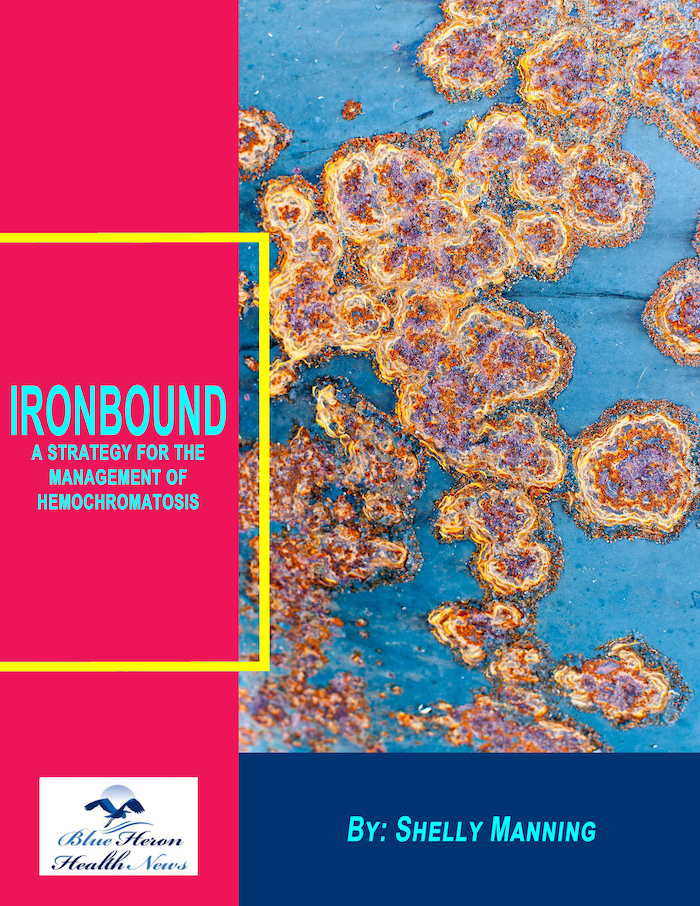
Ironbound™ A Strategy For The Management Of Hemochromatosis by Shelly Manning if you are suffering from the problems caused by the health condition of HCT due to excess amount of iron in your body then instead of using harmful chemical-based drugs and medications you are recommended to follow the program offered in Ironbound Shelly Manning, an eBook. In this eBook, she has discussed 5 superfoods and other methods to help you in reducing the level of iron in your body in a natural manner. Many people are benefited from this program after following it consistently.
What imaging studies are used to diagnose organ damage in hemochromatosis?
In hemochromatosis, imaging studies are valuable tools for diagnosing and assessing organ damage, particularly in the liver, heart, and other organs affected by iron overload. While blood tests provide critical information about iron levels and the severity of the condition, imaging studies help visualize the extent of damage or complications related to iron accumulation. The following imaging studies are commonly used:
1. Liver Imaging:
- Ultrasound:
A non-invasive and commonly used imaging technique to assess liver size, texture, and the presence of any abnormalities like cirrhosis or fibrosis. Ultrasound can help detect hepatomegaly (enlarged liver) or signs of liver damage, although it doesn’t directly measure iron accumulation. It is often used as a first-line tool. - MRI (Magnetic Resonance Imaging):
MRI is particularly useful in assessing liver iron concentration (LIC). An MRI with specialized techniques (such as MRI T2 imaging*) can quantify the level of iron in the liver, helping to determine the extent of iron overload. It is more sensitive than ultrasound for detecting iron deposition and liver fibrosis and is often used when more detailed information is needed. - CT (Computed Tomography):
A CT scan can assess liver size and any structural abnormalities (like cirrhosis or tumors). However, it is less effective than MRI in detecting iron overload specifically, as it doesn’t provide detailed information about iron deposition.
2. Heart Imaging:
- Cardiac MRI:
MRI is also a key tool for assessing heart damage due to iron overload in hemochromatosis. Excess iron in the heart can lead to cardiomyopathy or heart failure. Cardiac MRI is the most effective imaging method for evaluating myocardial iron content. It helps detect iron deposition in the heart muscle and assess the extent of any cardiac damage, such as dilated cardiomyopathy or arrhythmias, that may occur in advanced stages of hemochromatosis. - Echocardiogram:
An echocardiogram uses sound waves to create images of the heart and can assess heart function, including the size of the heart chambers and the pumping ability. While it doesn’t directly measure iron, it can detect signs of heart failure or cardiomyopathy that might result from iron overload.
3. Pancreas Imaging:
- MRI or CT Scan:
MRI or CT scans can be used to assess the pancreas in patients with hemochromatosis, particularly if there are concerns about damage related to iron accumulation. Iron overload in the pancreas can lead to diabetes mellitus, a common complication of hemochromatosis. Imaging may show changes in the size or structure of the pancreas, although these findings are not always conclusive for diagnosing iron-induced damage.
4. Joint Imaging:
- X-rays or MRI:
Hemochromatosis can lead to arthritis due to iron deposition in the joints, particularly in the hands and knees. X-rays can show joint damage, such as cartilage loss or osteoarthritis, while MRI may be used to assess more subtle changes in the joints and soft tissues. However, joint imaging is typically used when there are clear symptoms of joint pain or stiffness.
5. Abdominal Imaging:
- Abdominal Ultrasound:
Abdominal ultrasound can detect enlargement or abnormalities in other organs, such as the liver, spleen, or kidneys, which may also be affected by iron overload. - CT Scan:
A CT scan can be used in specific cases to further assess abdominal organ damage or complications, particularly if there is concern about other causes of abdominal pain or if the liver is enlarged.
6. Bone Imaging:
- X-rays:
Chronic iron overload in hemochromatosis can also affect bone health, potentially leading to osteopenia or osteoporosis. X-rays can detect bone abnormalities, such as thinning or fractures, which may indicate bone loss associated with the disease. - Dual-Energy X-ray Absorptiometry (DEXA) Scan:
A DEXA scan is often used to assess bone mineral density and detect osteopenia or osteoporosis in patients with long-standing hemochromatosis.
Summary:
The main imaging studies used to assess organ damage in hemochromatosis are:
- MRI (especially for liver iron quantification and cardiac assessment)
- Ultrasound (for liver and organ size assessment)
- CT scans (for evaluating liver, heart, and abdominal organs)
- Echocardiogram (for heart function assessment)
- X-rays and MRI (for joint and bone damage) These imaging techniques, combined with blood tests, help diagnose and monitor the extent of organ damage in hemochromatosis, guiding treatment decisions and the management of complications.
Ironbound™ A Strategy For The Management Of Hemochromatosis by Shelly Manning if you are suffering from the problems caused by the health condition of HCT due to excess amount of iron in your body then instead of using harmful chemical-based drugs and medications you are recommended to follow the program offered in Ironbound Shelly Manning, an eBook. In this eBook, she has discussed 5 superfoods and other methods to help you in reducing the level of iron in your body in a natural manner. Many people are benefited from this program after following it consistently